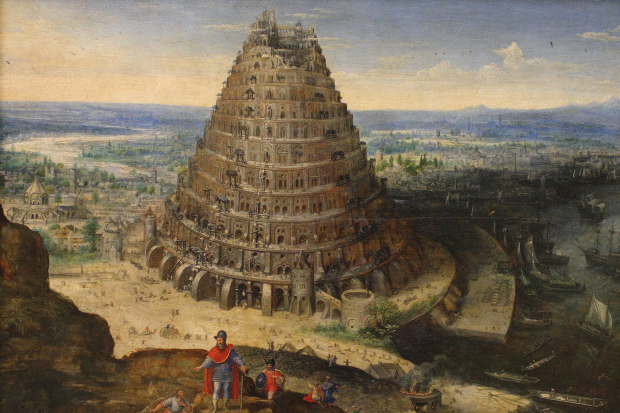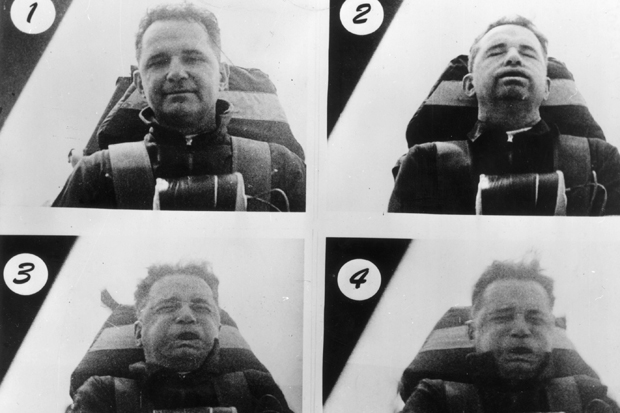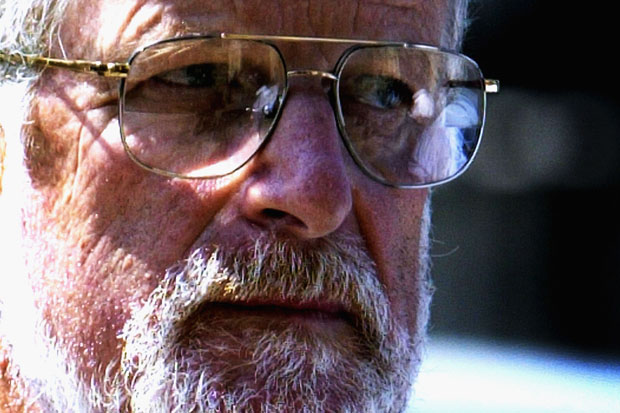Here are two books which have almost nothing in common: form, function, source material, methodology, all utterly different.
The surprise is that I should be surprised. Loss and rediscovery is at the core of what writers mostly deal with. We all experience loss (lovers, spectacles, innocence, our very existences) and that universality allows each of us to shape it as we will.
James Crawford’s approach is structurally simple, but his narrative is beguiling. He considers the life-span of 20 buildings — including the Tower of Babel (5000 BC to 323 BC), the Library of Alexandria (300 BC to AD 650), the Berlin Wall (1961 to 1989) and, provocatively, the web ‘settlement’ of Geocities, born in 1994 and deliberately and utterly obliterated by its owners in 2009.
Crawford tells the intricate biography of each of his buildings with the unspoken assumption that in some way a building (like the city in which it exists) is alive. He rehearses the conception of each building, the world into which it was born, the purpose it served and the people who shaped it.
The result is a cabinet of curiosities, a book of wonders with unexpected excursions and jubilant and haunting marginalia, such as — picked at random — the musician, poet and polymath Ziryab (‘blackbird’) who came to Cordoba to the court of Abd al-Rahman II and brought 10,000 songs, short haircuts, and the perfumes of ambergris, musk and camphor.
Ideas spin off ideas and facts off facts like a marvellous clattering snooker-table, so that a discursive critique of Fallen Glory would be three times as long as the book itself, and quite mad. But Crawford has managed to keep the thing under calm control. He moves happily from Foreign Office telegrams to Allenby to Gibbon’s lie about sitting in the ruined Capitol of Rome and hearing monks chanting in the Temple of Jupiter, where they hadn’t been for ages. He points us at the infelicitous 9/11 Memorial quote from Vergil (‘No day shall erase you from the memory of time’) which is not only a pretty poor translation but also refers to the savagery of Nisus and Euryalus, gay lovers and terrorist butchers who, when captured and butchered themselves went joyfully, as martyrs, to their deaths — ‘a sentiment’, says Crawford, ‘fitting more closely with the hijackers of 11 September than with their victims’.
Here’s a letter from Aristeas, a scholar at the Alexandria library, to his brother Philocrates, setting out the scope of the operation; here’s the aisle of the old St Paul’s turned into a hotbed of news and gossip; here’s Jeremy Bentham getting overexcited about the St Petersburg Panopticon; here, in short, is everything exampled, from wit to greed, violence to tranquillity, savagery to civility.
If there’s a lesson here, it’s that what Frank Lloyd Wright had to say about the skyscraper was true of so many of humanity’s great works:
Millions of tons of brick and stone go high up into thin air. . . Therefore millions of tons of stone and brick will have to come down again. Come down when? Come down how?
In new St Paul’s is Christopher Wren’s epitaph, got up by his son: Lector, si monumentum requiris, circumspice. But Crawford serves to remind us that one day we may, as exhorted, look about us and see no monument except, perhaps, rubble. As the witless patsies of Islamic State continue with their blood-sodden expunging of Palmyra (which happened after Crawford went to press) we can remind ourselves that, like the Roman damnatio memoriae, obliteration can serve to perpetuate rather than obscure. We see the rubble and ask ‘What was there, once?’ ‘The site of a great civilisation, destroyed by fools long since gone to ignominy and damnation. Here is the tale of how stupid they were…’
Robert Harbison’s Ruins and Fragments is a different kettle of fish entirely. The title is, of course, an echo of The Waste Land: ‘These fragments I have shored against my ruin.’ Harbison has been chipping meticulously away at the intersection between architecture and performance, between style and intention, and potential and ruin, for his entire career. Ruins is not an easy book but it’s a rewarding one. The reader who sees the point of what he’s trying to do will find it a finely turned spur to thought, whether it’s about Parisian galleries, Finnegans Wake, Montaigne, the Iliad, Detroit and the many other fragments we shore, not against our ruin, but as the very foundations of the postmodern world.
The crucial thing is that to read Harbison one needs not only a sympathy with deconstruction as a critical strategy, but also a sense that, whatever Derrida may have said, there is an awful lot beyond the text. A text, of course, needn’t just be words, it can be any artefact made up of signs; and any building is a welter of signs and, in its ruin, of equally eloquent fragments. Sometimes the reader has to do much of the shoring up, and personally I love that sort of thing. But, as they so annoyingly say, your mileage may vary.
Got something to add? Join the discussion and comment below.
Get 10 issues for just $10
Subscribe to The Spectator Australia today for the next 10 magazine issues, plus full online access, for just $10.
'Fallen Glory', £22.50 and 'Ruins and Fragments', £18 are available from the Spectator Bookshop, £14 Tel: 08430 600033
You might disagree with half of it, but you’ll enjoy reading all of it. Try your first month for free, then just $2 a week for the remainder of your first year.














Comments
Don't miss out
Join the conversation with other Spectator Australia readers. Subscribe to leave a comment.
SUBSCRIBEAlready a subscriber? Log in